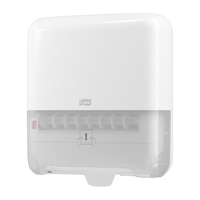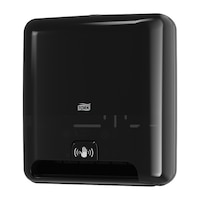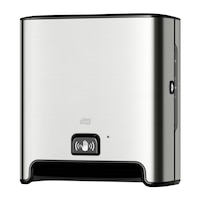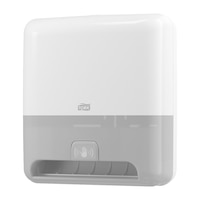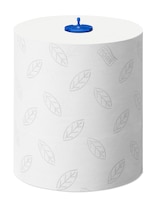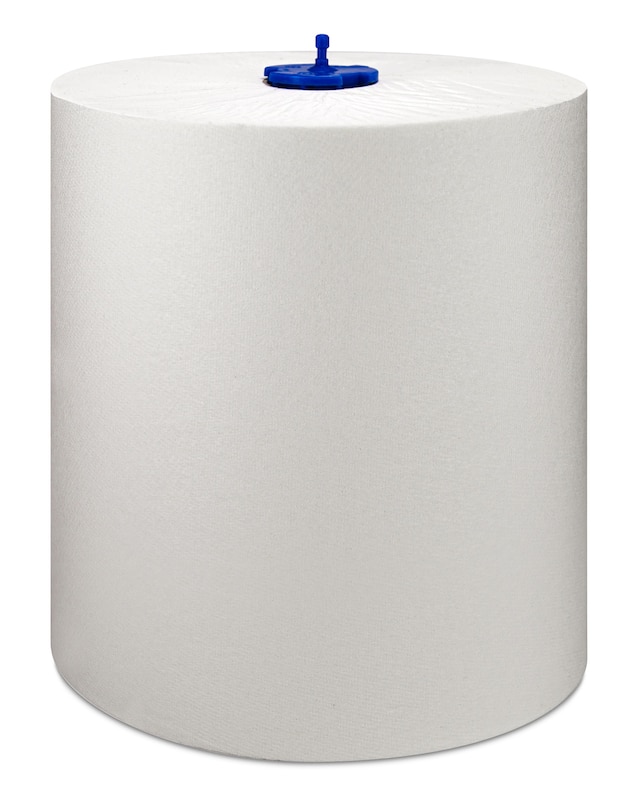

Tork Matic® Extra Long Hand Towel Roll Universal
Description
- An economic value for money - hand towel suitable for basic needs
- Extra long roll: fewer refills, saves maintenance time
- One-at-a-time dispensing for reduced consumption and increased hygiene
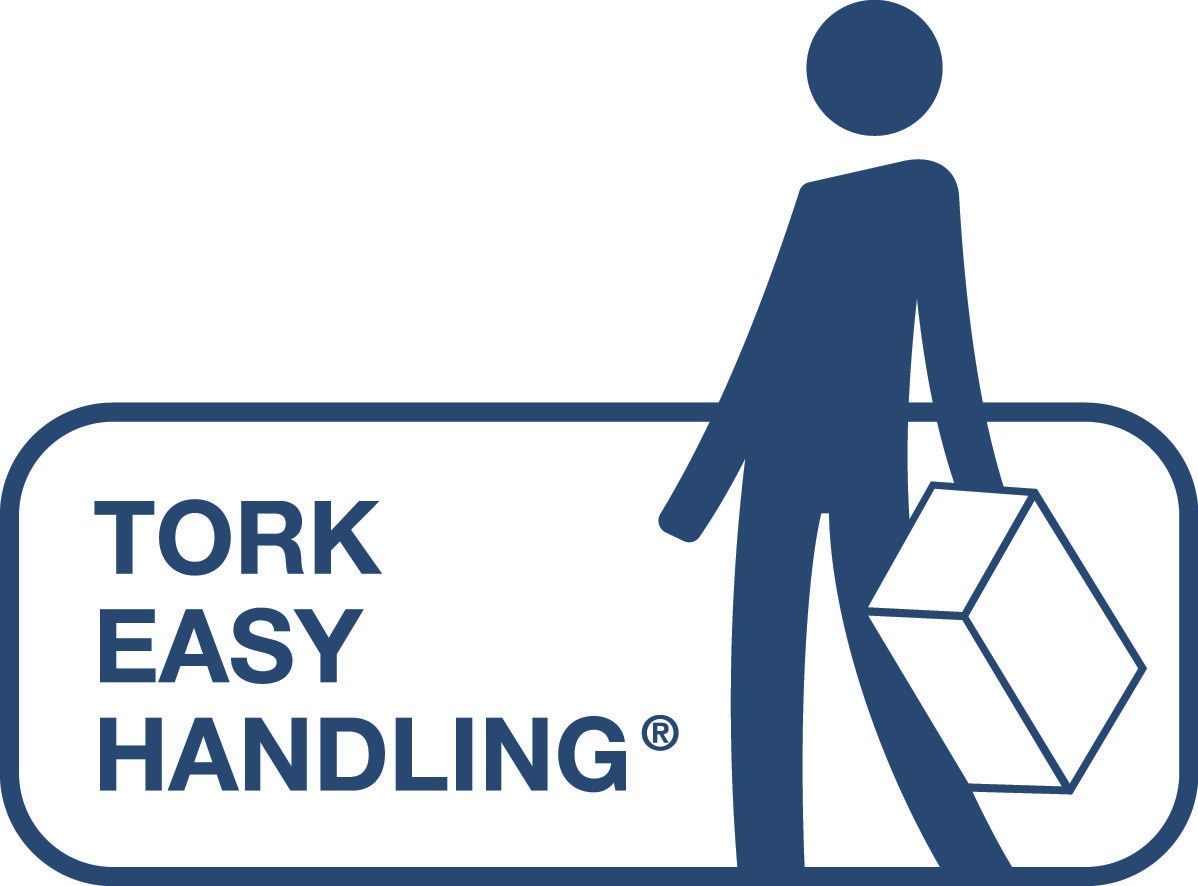
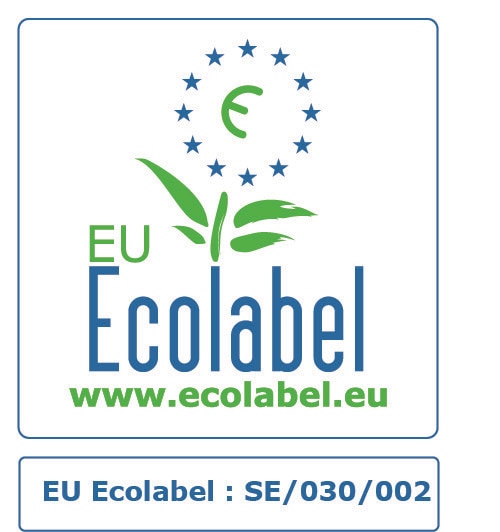
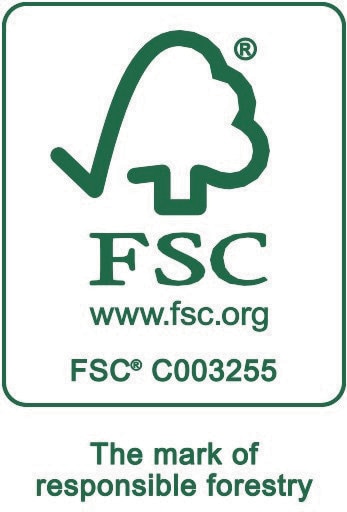
Product and delivery data
Delivery data
Carbon emission
- Tork Matic® has an average cradle-to-grave carbon footprint of 11.9 g CO2e per use, with cradle-to-gate part 8.5 g CO2e per use.*******
Use and waste
- One-at-a-time dispensing helps to control consumption and reduce waste.
- Switching from Tork C fold to Tork Matic will help reduce waste with 23%.*
- 99.9% jam-free.**
- Tork hand towels can be recycled into new tissue via Tork PaperCircle®.***
Hygiene
- One-sheet-at-a-time dispensing helps to minimise cross-contamination.****
- Drying hands with Tork paper towels will reduce more bacteria.*****
- Refills are third-party verified for short-term food contact.
- The sensor dispensers are certified Easy to use.******
- Tork Easy Handling® ergonomic packaging for easier carrying, opening and disposal.
Materials
- EU Ecolabel certified refills – reduced environmental impact across the product life cycle
- FSC® certified refills – made from responsibly sourced fibre
- Tork Matic Natural Hand Towel Roll is made from 100% recycled fibres, the colour comes from recycled cardboard boxes as one of the fibre sources.
References
*Comparing average Tork 471114 and 290265 with Tork 290067 based on weight. Lab report 20220705-011.
**Used with Tork refill articles 290016, 290059 & 290067.
***Available in select countries.
****Used with Tork refill articles 290016, 290059 & 290067. 20220208-001-Tork Matic Claim testing.
*****When washing with soap, water vs only using soap and water. Based on modified EN 1499 standard, tested with E. coli., using Tork Mild Soap refill art. 420501 and Tork PeakServe refill art. 10058.
******Certified by the Swedish Rheumatism Association.
*******Represents the Tork Matic® European refill assortment per user occasion. Based on third party reviewed life cycle assessments (LCA) covering all refill quality tiers combined with consumption data. Because this data is a system average, it is not intended to be used in carbon reporting for specific articles and consumption.
Content
The product is made from
Virgin pulp
The packaging material is made from paper or plastic.
Material
Virgin fibres
There are different methods used today for bleaching: ECF (elementary chlorine free, where chlorine dioxide is used, and TCF (totally chlorine free) where ozone, oxygen and hydrogen peroxide is used.
Virgin pulp fibres are produced out of softwood or hardwood. The wood is subject to chemical and/or mechanical processes where the cellulose fibres are separated out and lignin and other residuals are removed.
Bleaching is a cleaning process of the fibres and the aim is to achieve a bright pulp, but also to get a certain purity of the fibre in order to achieve the demands for hygiene products and in some cases to meet the requirements for food safety.
Chemicals
All chemicals (process aids as well as additives) are assessed from an environmental, occupational health and safety and product safety point of view.
To control product performance we use additives:
- Wet strength agents (for Wipers and Hand Towels)
- Dry strength agents (is used together with mechanical treatment of the pulp to make strong products like wipers)
- For coloured papers dyes and fixatives (to secure perfect fastness of the colour) are added
- For printing products printing inks (pigments with carriers and fixatives) are applied
- For multi ply products we often use water soluble glue to secure the integrity of the product
In most of our mills we do not add optical brighteners.
We do not use softeners for professional hygiene products.
High product quality is secured through quality and hygiene management systems throughout production, storage and transport.
In order to maintain a stable process and product quality the paper manufacturing process is supported by the following chemicals/ process aids:
- defoamers (surfactants and dispersing agents)
- pH-control (sodium hydroxide and sulphuric acid)
- retention aids (chemicals that help to agglomerate small fibres to prevent fiber loss)
- Coating chemicals (that help to control the creping of the paper to make it soft and absorbent)
To reuse broke we use:
- Pulping aid (chemicals that help to repulp wet strong paper)
In the cleaning of our waste water we use flocculation agents and nutritients for the biological treatment to secure that no negative impact on water quality comes from our mills.
Food Contact
This product fulfills the legislative requirements for Food Contact materials, confirmed by external certification performed by a third party. The product is safe for wiping food contact surfaces and may also come occasionally into contact with foodstuffs for a short period of time.
Environmental certification
This product is certified for FSC®.
Packaging
Fulfilment of Packaging and Packaging Waste Directive (94/62/EC): Yes
Article creation date and latest article revision
Date of issue: 19-04-2019
Revision date: 09-04-2025
Production
This product is produced at Kostheim - DE mill and certified according to HACCP, ISO 9001, ISO 14001 (Environmental management systems), OHSAS 18001, EMAS (eco-management and audit scheme), ISO 50001 and FSC Chain-Of-Custody.
Destruction
This product is mainly used for personal hygiene and can be collected together with household waste.





